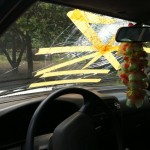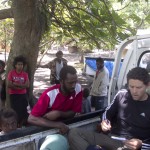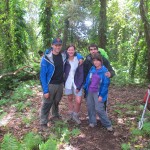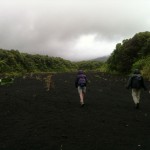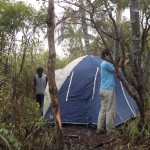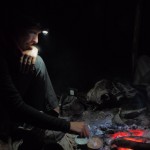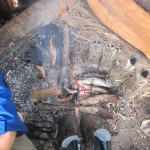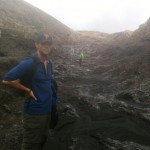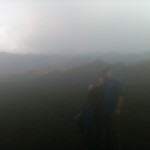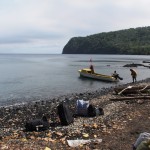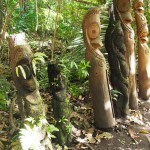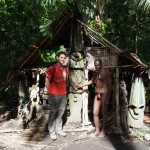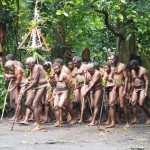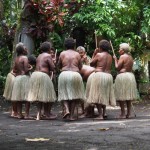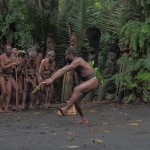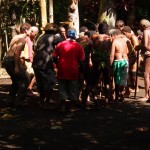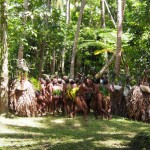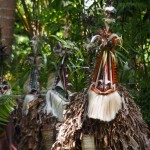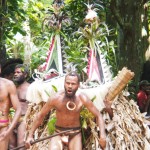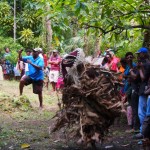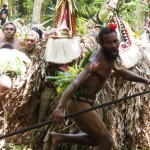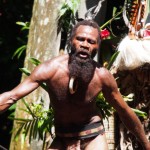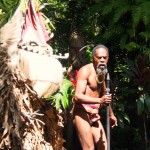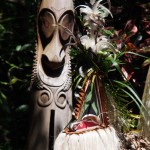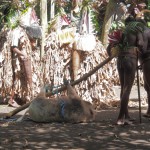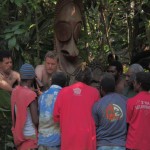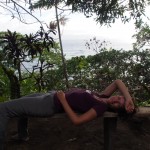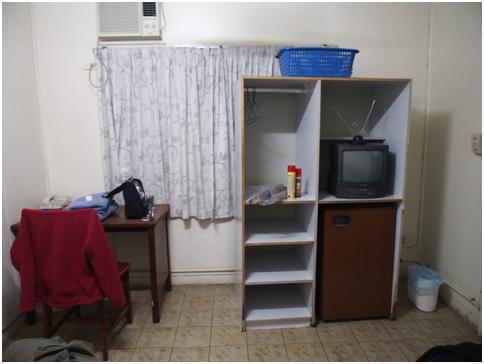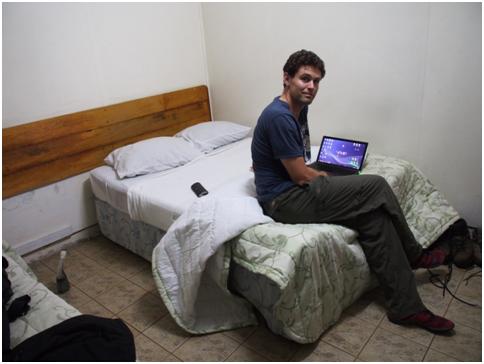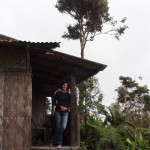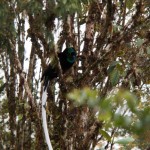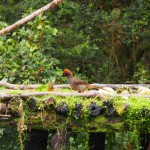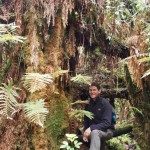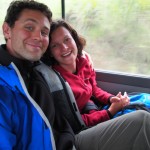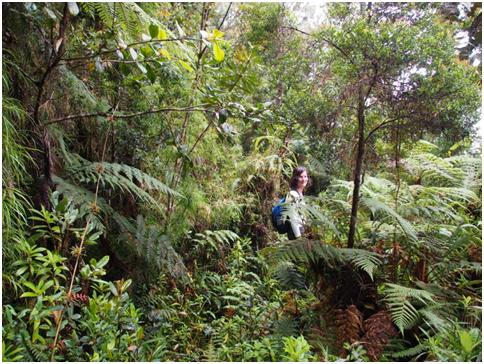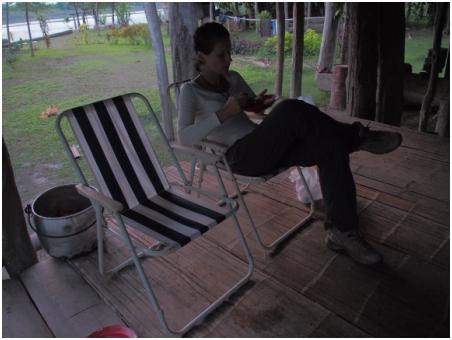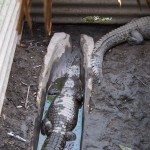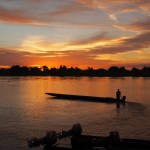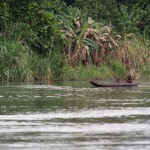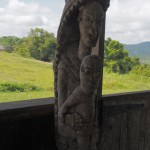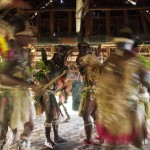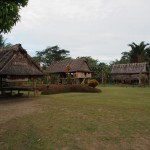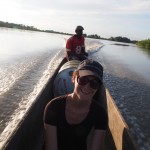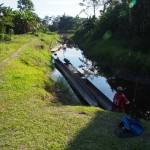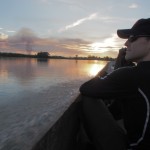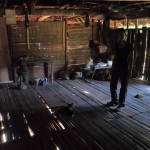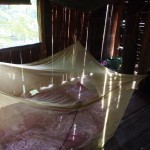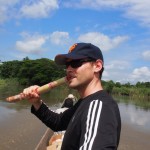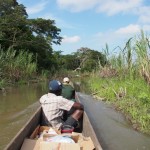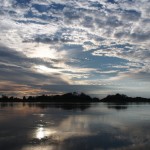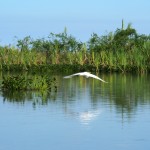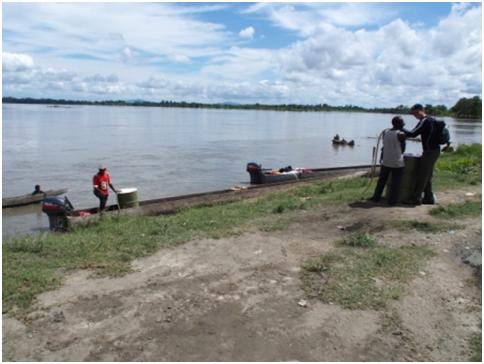The South Pacific is a pretty slow paced place; a place where you don’t sweat the small stuff (or even moderately sized stuff), but just sit back, relax and let things roll…. Which anyone who knows me will know is something I am just pathologically incapable of. I LIKE to sweat the small stuff; I find it makes the small stuff far less likely, in a few days’ time, to grow into medium sized, large or even frankly inconceivably enormous stuff that then turns round and bites you in the ass. With its inconceivably enormous teeth. Painfully.
So when we decided to embark on a two day volcano climb on Ambrym, our negotiation stance was clear. James did the talking (people here don’t really deal with women much), whilst I back-seat drove with true micro-management flare. James established that yes, we could do the trek. I pushed for details. Yes, there would be a high quality and reliable tent. Yes, we’d have sleeping bags. There would – of course! – be ample numbers of sleeping mats to sleep on. Yes, there was a plentiful water supply on the mountain. Et cetera. And yes, I was getting laughed at. We’re in the South Pacific, after all. These things get taken care of if you just relax and let them…
So the four of us (James, myself and Sergi and Miriam, 2 Spanish travelers who were also staying at Chief Sekor’s) felt quietly confident as we set off on our way. We were looking after our own food, with Sergi and Miriam kindly sharing with us some canned tuna and pate they’d brought onto the island, and the sure knowledge that we’d be able to pick up some wheels of bread to see us through the trip…. Only the baker hadn’t baked that morning, so no bread. No drama, there’d be some in the next village. Hmmm, although actually the baker here had gone fishing, so again no bread. Still, we’d get some in Ranvetlam, where we’d also be picking up our gear….. Ummm, about that gear. You know we promised sleeping bags? Well, we don’t actually have any. Is that ok? As long as we have sleeping mats? Sure. OK, and what if we don’t actually have sleeping mats either. Well, we have 2 paper thin ancient sleepmat remnants plus an old mattress you can have. Should be fine for the four of you, right? Well, yes, should be fine. After all, we’ll have plenty of food and water. Best go get that bread….. Bread? Oh, it’s just that the baker here is guiding another group on the mountain, so there is no bread. And we’re out of breakfast crackers. However, what we can do for you is to cook up some rice. LOTS of rice. That’ll keep you going.
Well prepared? Not us. Still, we were on a quest, and nothing and nobody could stand in our way.
We left behind the jungle terrain that formed the first hour of our hike and entered the ash plains of Mordor; desolate expanses of black bereft of flora or fauna (other than the ever encroaching orcs of course). Our course took us ever onwards, towards the fiery crater that formed our goal; fortunately our elven-woven hiking gear provided some protection from unfriendly eyes. Also from the rain. For yes, of course it rained. This wouldn’t be a sweeping 3 part epic without a storm or two. We got pretty darn wet before we reached our campsite for the evening, an ill-omened place with only a mean, smoking hut for shelter. Our men put up our tents, and undeterred by the now torrential rain, we set off for Mount Doom. I mean Mount Ambrym. One and a bit hours scrambling over lava later, we arrived at the peak. We saw……nothing. Torrential rain, don’cha know – so cloudy we could hardly see each other never mind the promised fiery crack. There went our plans for some nice hot rice that night. Back we marched to the shelter, warmed only by the promise of drying off in the shelter of our tent and some sitting round the fire telling camping stories.
You know that there highly technical tent? Well, it was about an inch deep in water when we returned – clearly not elven made. Us hobbits have good sturdy hairy feet but that’s just too much to take. James-Frodo set the men to try setting it up again whilst we sat in the hut by the fire, weeping sooty tears as we tied to avoid death through smoke inhalation. Eventually we prepared our dinner – cold rice and tuna warmed (smoked?) near the fire (not at all what we likes my precious, we likes our fish RAWWWWWWW and WRRIIGGGGLINGGGG) and, utterly dampened by the day, went to bed. James-Frodo’s tent intervention meant the tent didn’t leak TOO much during the night and it was warm enough that I reckon I got a good solid hour or so of sleep before waking bright eyed for breakfast the next morning.
Breakfast: cold rice.
James-Frodo by this point was clearly unwell. He maintained that this was the combined effect of the chill and rain of yesterday, smoke inhalation and a shoddy night’s sleep, but I felt sure that the real reason was due to the heavy burden he was carrying; we still has about a pound of rice left by this point and by his heavy hanging head I knew this tortured him – but any time I tried to assist him, he thrust me angrily away crying that the rice was his and his alone. Sergi-Pippin and Miriam-Merry tried to brighten the atmosphere with their jokes and laughs, but to no avail. We knew there would be a 3 hour walk out of Mordor, and set in grimly to achieve our escape.
Yes, that “3 hours to the nearest village” thing. Ummm, that wasn’t true. It’s actually 7 hours to the nearest village. Yep, we know you’re out of water. And walking across arid plains through highly sulfurous air. Still, you’ll be alright. Famous sturdiness of the hobbits and all that. Anyway, you’ve some nice cold rice to look forward to for your lunches……Cue small panic: Where’s the rice? Gone. The porters had abandoned us in Mordor and taken it. Or that’s the official reason; personally I suspect Gollum.
Anyway, after a 7 hour walk with no water, food or shelter, we made it. And the village that we ended up in, glory of glories, had coconuts for us to slake our thirst, and also offered us some traditional “laplap” (ground manioc with coconut milk), typically something us tourists politely nibble on before discarding, that was eaten in a flash before the chief’s somewhat startled eyes.
Yep, we made it. You see, things always work out ok in the South Pacific. You just have to go along with the ride.
- Our vehicle. This is perhaps the point we should have started to worry….
- James runs through the checklist. There’s a lot of crosses on that there list
- The adventure begins!
- Day 1 ash plains of MORRRRDORRRRR
- The famous tent. If you zoom in enough, you might see the leaks!
- Dinner of flame-smoked tuna and cold rice. Yum!
- Gently smoking the boots to dry them off a little
- James looking happy on a lava stream
- Volcano smog romance. Must be love

